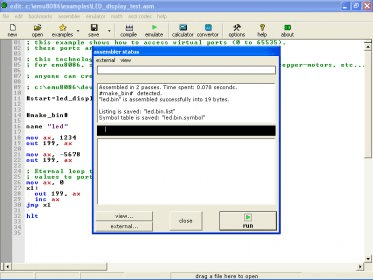

Contents • • • • • • • • • • • • • • • • • • • • • • • History [ ] Background [ ] In 1972, Intel launched the, the first 8-bit microprocessor. It implemented an designed by corporation with programmable in mind, which also proved to be fairly general-purpose. The device needed several additional to produce a functional computer, in part due to it being packaged in a small 18-pin 'memory package', which ruled out the use of a separate address bus (Intel was primarily a manufacturer at the time). Two years later, Intel launched the, employing the new 40-pin originally developed for ICs to enable a separate address bus. It has an extended instruction set that is (not ) with the 8008 and also includes some instructions to make programming easier. The 8080 device, often described as 'the first truly useful microprocessor' [ ], was eventually replaced by the -based (1977), which sufficed with a single +5 V power supply instead of the three different operating voltages of earlier chips. Other well known 8-bit microprocessors that emerged during these years are (1974), (1975), (1975), (1976), and (1978).
Emulator of Intel 8086 processor on Java. Allow user to load assembler code for 8086, compile and run it, watch the state of registers, memory, stack and change it for debugging and experimenting. The main project purpose is training. I8086emu is an cross-platform emulator for the Intel 8086 microprocessor. It has support for dynamically loadable device plugins and some peripherals like a PIT, PIC, 8-segment-displays, buttons and leds. I8086emu comes with an ncurses and an GTK-2 gui.
The first x86 design [ ]. Intel 8086 CPU die image The 8086 project started in May 1976 and was originally intended as a temporary substitute for the ambitious and delayed project. Chicken Invader 2 Crack Serial Key. It was an attempt to draw attention from the less-delayed 16- and 32-bit processors of other manufacturers (such as,, and ) and at the same time to counter the threat from the (designed by former Intel employees), which became very successful. Both the architecture and the physical chip were therefore developed rather quickly by a small group of people, and using the same basic elements and physical implementation techniques as employed for the slightly older (and for which the 8086 also would function as a continuation).
Marketed as, the 8086 was designed to allow for the 8008, 8080, or 8085 to be automatically converted into equivalent (suboptimal) 8086 source code, with little or no hand-editing. The programming model and instruction set is (loosely) based on the 8080 in order to make this possible. However, the 8086 design was expanded to support full 16-bit processing, instead of the fairly basic 16-bit capabilities of the 8080/8085. New kinds of instructions were added as well; full support for signed integers, base+offset addressing, and self-repeating operations were akin to the design but were all made slightly more general in the 8086. Instructions directly supporting -family languages such as and were also added. According to principal architect, this was a result of a more software-centric approach than in the design of earlier Intel processors (the designers had experience working with compiler implementations).